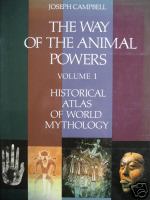|
Historical Atlas of World Mythology
The Historical Atlas of World Mythology is a multi-volume series of books by Joseph Campbell that traces developments in humankind's mythological symbols and stories from pre-history forward. Campbell is perhaps best known as a comparativist who focused on universal themes and motifs in human culture. He first conceived of the Historical Atlas in the late 1970s as an extension of his works, The Mythic Image and The Masks of God. Like those books, the Historical Atlas of World Mythology intended to show the ways in which those universal themes and motifs were expressed differently by different cultures in different times and places. Heavily illustrated and annotated, with numerous charts and maps to show both variations and similarities in different cultures' expressions of mythic themes, this series was intended to serve both academic and lay readers. The Historical Atlas was left incomplete when Campbell died in 1987. SummaryThis series was to build on Campbell's idea, first presented in The Hero with a Thousand Faces, that myth evolves over time through four stages:
Publishing historyOnly the first volume was completed at the time of Campbell's death. Published by Alfred van der Marck editions as a single book in 1983, it was rereleased by Harper and Row in 1988, in the wake of Campbell's posthumous fame, brought by the airing of the television series, The Power of Myth. The first three parts of the second volume, which Campbell was working on literally to the day that he died, were completed by Campbell's long-time editor, Robert Walter, and published by Harper and Row in 1989. Both volumes are currently out of print. Campbell left rough text for the last two parts of Way of the Seeded Earth, as well as notes for the final two volumes. The Joseph Campbell Foundation has expressed the intention to rerelease the existing books, and, if possible, to complete Campbell's magnum opus.[1] See alsoReferences
|
||||||||||||||||||||||
Portal di Ensiklopedia Dunia
